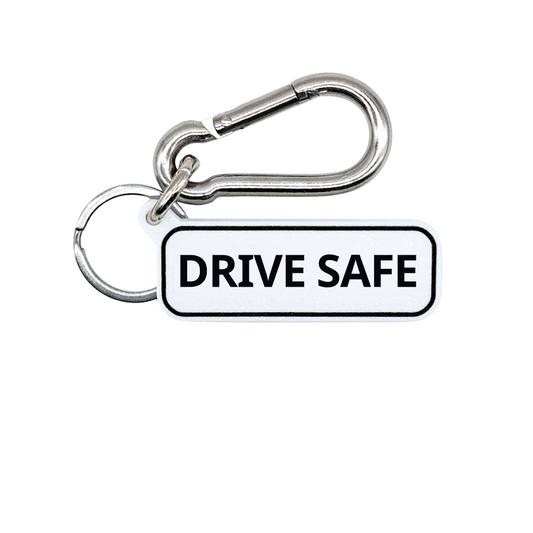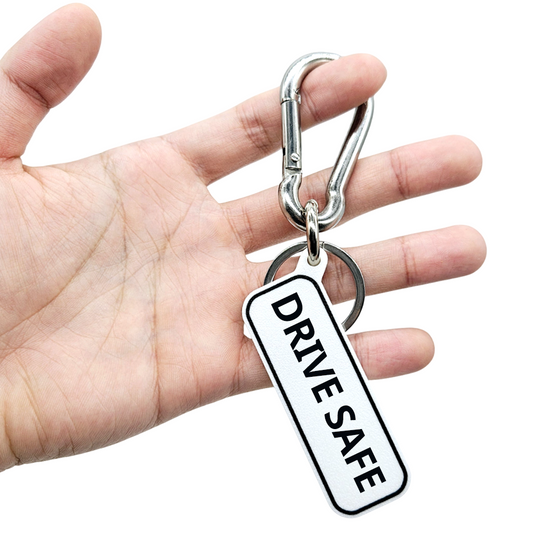
Drive Safe: 15 Tips to Keep Your Kids Safe in the Car
Share
1. Choosing the Right Car Seat
The first and most critical step in ensuring your child’s safety in the car is selecting the appropriate car seat. The right car seat can significantly reduce the risk of injury during an accident. There are three main types of car seats:
- Infant Car Seats: Designed for newborns and small babies, these seats are rear-facing and provide crucial support for the baby’s head, neck, and spine.
- Convertible Car Seats: These seats can be used in both rear-facing and forward-facing positions, making them suitable for infants and toddlers.
- Booster Seats: Once a child outgrows the forward-facing car seat, a booster seat helps position the car’s seat belt correctly over the stronger parts of the child's body.
When choosing a car seat, consider your child's age, weight, and height, and ensure the seat meets all safety standards. Proper installation is also crucial, so follow the manufacturer’s instructions meticulously.
2. Proper Installation of Car Seats
Even the best car seat won't protect your child if it's not installed correctly. Here’s how to ensure a secure installation:
- Read the Manual: Every car seat comes with an instruction manual. Read it thoroughly to understand the installation process.
- Use the Right Anchors: Modern cars are equipped with LATCH (Lower Anchors and Tethers for Children) systems, which make installation easier and more secure. If your car doesn’t have LATCH, use the seat belt to secure the car seat.
- Check for Stability: Once installed, the car seat should not move more than an inch in any direction. If it does, it’s not tight enough.
- Get it Inspected: Many communities offer car seat inspection services. Take advantage of these to ensure your car seat is installed correctly.
3. Securing Your Child in the Car Seat
Once the car seat is properly installed, it’s vital to secure your child correctly. Follow these steps:
- Check the Harness: The harness should be snug against your child's body. A loose harness can result in serious injury in the event of an accident.
- Positioning the Chest Clip: The chest clip should be at armpit level, sitting across your child’s chest, not the abdomen or neck.
- Adjusting the Straps: The shoulder straps should lie flat without any twists, and they should be adjusted to fit your child snugly.
- Avoiding Bulky Clothing: Never place your child in a car seat while wearing a bulky coat or snowsuit, as it can interfere with the harness. Instead, drape a blanket over the harness if your child needs warmth.
4. The Importance of Rear-Facing Seats
Experts recommend keeping your child in a rear-facing car seat for as long as possible, ideally until they reach the maximum height or weight allowed by the car seat manufacturer. Rear-facing seats better protect a child's head, neck, and spine in the event of a collision. The American Academy of Pediatrics advises that children should ride rear-facing until at least the age of two.
5. Transitioning to a Booster Seat
When your child outgrows their forward-facing car seat, it's time to transition to a booster seat. Booster seats help position the seat belt correctly over your child’s body. Here’s how to ensure a safe transition:
- Height and Weight Guidelines: Ensure your child meets the height and weight requirements for a booster seat, which are usually around 40 pounds and 4 feet 9 inches tall.
- Seat Belt Positioning: The seat belt should lie across the upper thighs and be snug across the shoulder and chest. It should not cross the neck or face.
- Backless vs. High-Back Booster: High-back boosters provide better support and are preferable, especially in vehicles without headrests.
6. Using Seat Belts Correctly
Once your child is big enough to transition out of a booster seat, they should use the car’s seat belt. It's essential to teach them how to wear it correctly:
- Lap Belt Position: The lap belt should rest low across the hips, not the stomach.
- Shoulder Belt Position: The shoulder belt should lie across the chest and shoulder, not the neck or face.
- Seat Positioning: Your child should sit with their back against the seat, and their knees should bend at the edge of the seat.
7. Ensuring Safety During Long Road Trips
Long road trips with children can be challenging, but they don't have to compromise safety. Here are some tips to keep your kids safe and comfortable during extended drives:
- Plan Frequent Stops: Take breaks every two hours to allow your child to stretch and move around. It also gives them a chance to relieve themselves and reduces restlessness.
- Pack Essentials: Bring along snacks, water, and entertainment to keep your child occupied and comfortable. Avoid giving them too many liquids to minimize bathroom stops.
- Monitor Temperature: Ensure the car is at a comfortable temperature for your child. Use sunshades to block direct sunlight, and never leave your child unattended in the car.
8. Teaching Kids About Car Safety
Educating your children about car safety is just as important as strapping them in securely. Start teaching them from a young age:
- Buckle Up: Emphasize the importance of always wearing a seat belt, even for short trips.
- Stay Seated: Teach your child to stay seated while the car is moving and to never unbuckle themselves.
- Safe Exits: Instruct your child to only get out of the car on the side that’s away from traffic, and always under your supervision.
- Emergency Protocols: Educate older children on what to do in case of an emergency, such as how to call for help and stay calm.
9. Avoiding Distractions While Driving
Driving with children can be distracting, but it's crucial to stay focused on the road. Here’s how to minimize distractions:
- Prepare Ahead: Make sure your child is comfortable and has everything they need before you start driving. This includes snacks, drinks, and entertainment.
- Use Mirrors: A child-view mirror can help you keep an eye on your child without turning around.
- Pull Over if Necessary: If your child needs attention, pull over to a safe spot rather than trying to address the situation while driving.
10. Safety Tips for Car Pools and Rideshares
Carpooling and using rideshares can be convenient, but they come with additional safety considerations. Here’s how to ensure your child’s safety in these situations:
- Verify Car Seat Compatibility: Ensure the car your child will be riding in has the appropriate car seat installed. If not, provide your own.
- Communicate Safety Rules: Make sure all drivers involved in the carpool or rideshare are aware of your safety rules, such as keeping children buckled up at all times.
- Trustworthy Drivers: Only allow your child to ride with drivers you trust and who understand the importance of child car safety.
11. Understanding and Following Local Car Seat Laws
Car seat laws vary by state and country, so it's essential to familiarize yourself with the regulations in your area. Adhering to these laws isn't just about avoiding fines—it's about ensuring your child's safety.
- Know the Requirements: Each state has specific requirements regarding car seat types, installation, and usage based on a child’s age, height, and weight.
- Penalties for Non-Compliance: Failing to comply with car seat laws can result in fines, points on your driving record, and increased insurance premiums. More importantly, it puts your child at risk.
- Stay Updated: Car seat laws can change, so stay informed about any updates or revisions.
12. Weather Considerations for Car Safety
Weather conditions can significantly impact driving safety, especially when children are in the car. Here’s how to stay safe:
- Winter Driving: In cold weather, ensure your car is winter-ready with proper tires, a full tank of gas, and emergency supplies. Dress your child in layers and avoid bulky coats in the car seat.
- Summer Safety: Never leave your child alone in a parked car, as temperatures can rise rapidly, leading to heatstroke. Use sunshades to keep the car cool and provide plenty of water to stay hydrated.
- Rain and Fog: Reduce speed and increase following distance during rain or fog. Ensure your child’s car seat is securely fastened and that all passengers are buckled up.
13. Common Mistakes to Avoid
Even the most cautious parents can make mistakes when it comes to car safety. Here are some common errors to watch out for:
- Using an Old or Expired Car Seat: Car seats have expiration dates. Using an expired seat or one that’s been involved in a previous accident can compromise its effectiveness.
- Improper Seat Belt Positioning: Ensure the seat belt is positioned correctly across your child’s body. A poorly positioned seat belt can cause serious injuries in a crash.
- Ignoring Manufacturer Instructions: Always follow the car seat manufacturer’s instructions for installation and use. Improper installation is a leading cause of car seat failures.
14. Essential Car Safety Accessories
There are several accessories available that can enhance your child's safety in the car. Here are a few worth considering:
- Car Seat Covers: These protect the car seat from spills and wear, extending its lifespan.
- Window Shades: Protect your child from harmful UV rays and reduce heat inside the car.
- Seat Belt Adjusters: These ensure that the seat belt fits correctly, providing better protection.
- Child Safety Locks: Prevent your child from opening doors or windows while the car is in motion.
15. The Role of Technology in Enhancing Car Safety
Technology has significantly improved car safety, offering features that protect both children and adults. Some of these include:
- Automatic Emergency Braking (AEB): This system detects potential collisions and applies the brakes if you don’t react in time.
- Rear-View Cameras: These help you see what's behind you when backing up, reducing the risk of hitting unseen objects or people.
- Blind Spot Monitoring: Alerts you to vehicles in your blind spots, helping you make safer lane changes.
- Lane Departure Warning: Warns you if you start to drift out of your lane, reducing the risk of accidents.


